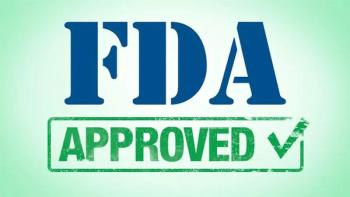
How to Measure Real-World Data Against Clinical Trials in Myeloma
While clinical trials drive FDA approvals, real-world data may be equally important as it lends insight to a broader group of patients.
Clinical trials are the driving force behind most oncology discoveries and FDA approvals; however, strict eligibility criteria restrict many patients from participating, potentially leaving out large groups of people, according to Ajai Chari, MD.
In this situation, having real-world data becomes an invaluable resource in determining the efficacy of certain drug regimens, he added.
In the myeloma setting, patients tend to be older and with more comorbidities, which often prevents them from enrolling in a trial. Recent research presented at the 2019 European Hematology Association Congress examined the real-world outcomes of patients with relapsed/refractory myeloma treated with lenalidomide, bortezomib, and dexamethasone — a regimen referred to as RVD – compared to bortezomib plus dexamethasone (BD).
In the overall study population, the RVD triplet improved progression-free survival (PFS) by an average of 26 months. Patients who may have also been considered frail, including those who were over the age of 80 or had a Charleston Comorbiditiy Index (CCI) and ECOG scores over 2, also saw similar benefit.
“Often, these 3 groups of patients are not included in studies, so you really don’t know what the data are,” Chari, study author and associate professor of medicine, hematology and medical oncology at Icahn School of Medicine at Mount Sinai, said in an interview with OncLive, a sister publication of Oncology Nursing News.
“How many 80-plus-year-olds are included in clinical trials? Almost none,” he added. “So it’s good to see that this triplet therapy in the real world also still contributed to improved clinical outcomes.”
Chari did mention, however, that it is important for clinicians to scale back the dosing of these drugs, when appropriate.
“It’s important to use dose attenuation with these regimens to make sure that patients are tolerating them well,” he said. “But clearly, dose-attenuated RVD can be very well-tolerated and associated with excellent outcomes.”
Looking ahead, Chari emphasized that it is crucial for researchers and clinicians alike to pay attention to real-world data in addition to the results of clinical trials. While this should be done in all cancer spaces, it is particularly important in the myeloma setting.
“In general, we’re learning more and more that clinical trials are really important to get drugs approved, but we really do need to balance that with real-world evidence, recognizing the disparities between the 2,” he said. “We really need to broaden [clinical trial selection criteria], particularly in myeloma where patients are older. They’re going to have other cancers; they’re going to have renal dysfunction. If we’re not allowing these patients [on trials], how do we generalize study data to people we’re actually treating in clinic?”
Read more:
Newsletter
Knowledge is power. Don’t miss the most recent breakthroughs in cancer care.































































































